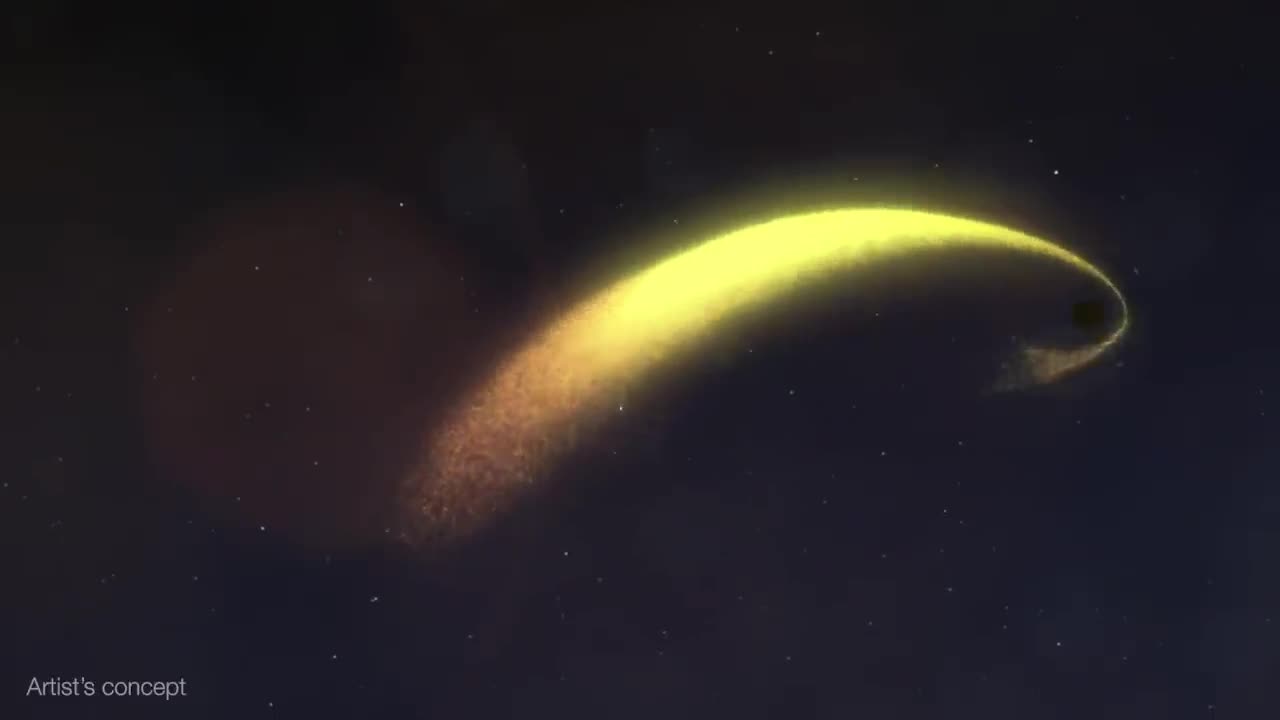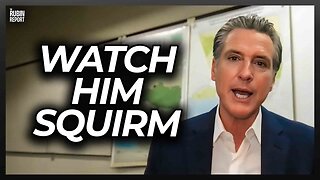Premium Only Content

Black Hole Snack Attack
Using NASA's Neil Gehrels Swift Observatory, which launched in 2004, scientists have discovered a black hole in a distant galaxy repeatedly nibbling on a Sun-like star. The object heralds a new era of Swift science made possible by a novel method for analyzing data from the satellite's X-ray Telescope (XRT).
When a star strays too close to a monster black hole, gravitational forces create intense tides that break the star apart into a stream of gas. The leading edge swings around the black hole, and the trailing edge escapes the system.
These destructive episodes are called tidal disruption events. Astronomers see them as flares of multiwavelength light created when the debris collides with a disk of material already orbiting the black hole.
Recently, astronomers have been investigating variations on this phenomena, which they call partial or repeating tidal disruptions.
During these events, every time an orbiting star passes close to a black hole, the star bulges outward and sheds material, but survives. The process repeats until the star looses too much gas and finally breaks apart. The characteristics of the individual star and black hole system determine what kind of emission scientists observe, creating a wide array of behaviours to categorise.
On June 22, 2022, XRT captured Swift J0230 for the first time. It lit up in a galaxy around 500 million light-years away in the northern constellation Triangulum. Swift's XRT has observed nine additional outbursts from the same location roughly every few weeks.
Scientists propose that Swift J0230 is a repeating tidal disruption of a Sun-like star orbiting a black hole with over 200,000 times the Sun's mass. They estimate the star loses around three Earth masses of material on each pass. This system provides a bridge between other types of suspected repeating disruptions and allowed scientists to model how interactions between different star types and black hole sizes affect what we observe.
Swift J0230's discovery was possible thanks to a new, automated search of XRT observations called the Swift X-ray Transient Detector.
After the instrument observes a portion of the sky, the data is transmitted to the ground, and the program compares it to previous XRT snapshots of the same spot. If that portion of the X-ray sky has changed, scientists get an alert. In the case of Swift J0230, astronomers were able to rapidly coordinate additional observations of the region.
-
 LIVE
LIVE
Simply Bitcoin
1 hour agoBillionaire FORCES Jordan Peterson To See The $400T Bitcoin Black Hole | EP 1263
904 watching -
 1:04:40
1:04:40
Timcast
1 hour agoDEAD BODY Found Amid MASS LOOTING As LA Riots Spread Nationwide
40.2K99 -
 2:03:09
2:03:09
Steven Crowder
4 hours ago🔴 LA on the Brink: Riots Push Trump to Edge of Invoking Insurrection
207K174 -
 LIVE
LIVE
The Dana Show with Dana Loesch
1 hour agoWATCH: The Dana Show LIVE on Rumble! 06-10-25
725 watching -
 31:35
31:35
The Mel K Show
2 hours agoMORNINGS WITH MEL K - The Globalist Funded US Color Revolution Exposed-Will American Citizens Wake Up to the Massive Fraud Before it’s too Late? 6/10/25
5.61K5 -

Rebel News
1 hour ago$93M ArriveCan disaster, Poilievre backs CAF spending, Clueless immigration minister | Rebel Roundup
1 -
 LIVE
LIVE
TheAlecLaceShow
2 hours agoGuests: Secretary Doug Collins & Navy SEAL David Rutherford | LA Riots Day 4 | The Alec Lace Show
87 watching -
 1:05:58
1:05:58
The Rubin Report
3 hours agoGavin Newsom Humiliates Himself in Reaction to Trump’s Threat
30.2K56 -
 2:27:17
2:27:17
Akademiks
3 hours agoDiddy Trial Day 20: Jane Doe aka 50 Cent Baby Moms Cross Examine. ALLSTAR FREEKOFF Day 2/30
31.3K4 -
![Insurrection Incoming? No Kings Protests Sweep U.S. on June 14th - Corey DeAngelis; 3+ [ N A T U R A L ] Tips to Stay Healthy - Dr. Troy Spurrill | FOC Show](https://1a-1791.com/video/fww1/87/s8/1/t/r/X/R/trXRy.0kob.3-small-Insurrection-Incoming-No-Ki.jpg) LIVE
LIVE
Flyover Conservatives
13 hours agoInsurrection Incoming? No Kings Protests Sweep U.S. on June 14th - Corey DeAngelis; 3+ [ N A T U R A L ] Tips to Stay Healthy - Dr. Troy Spurrill | FOC Show
435 watching